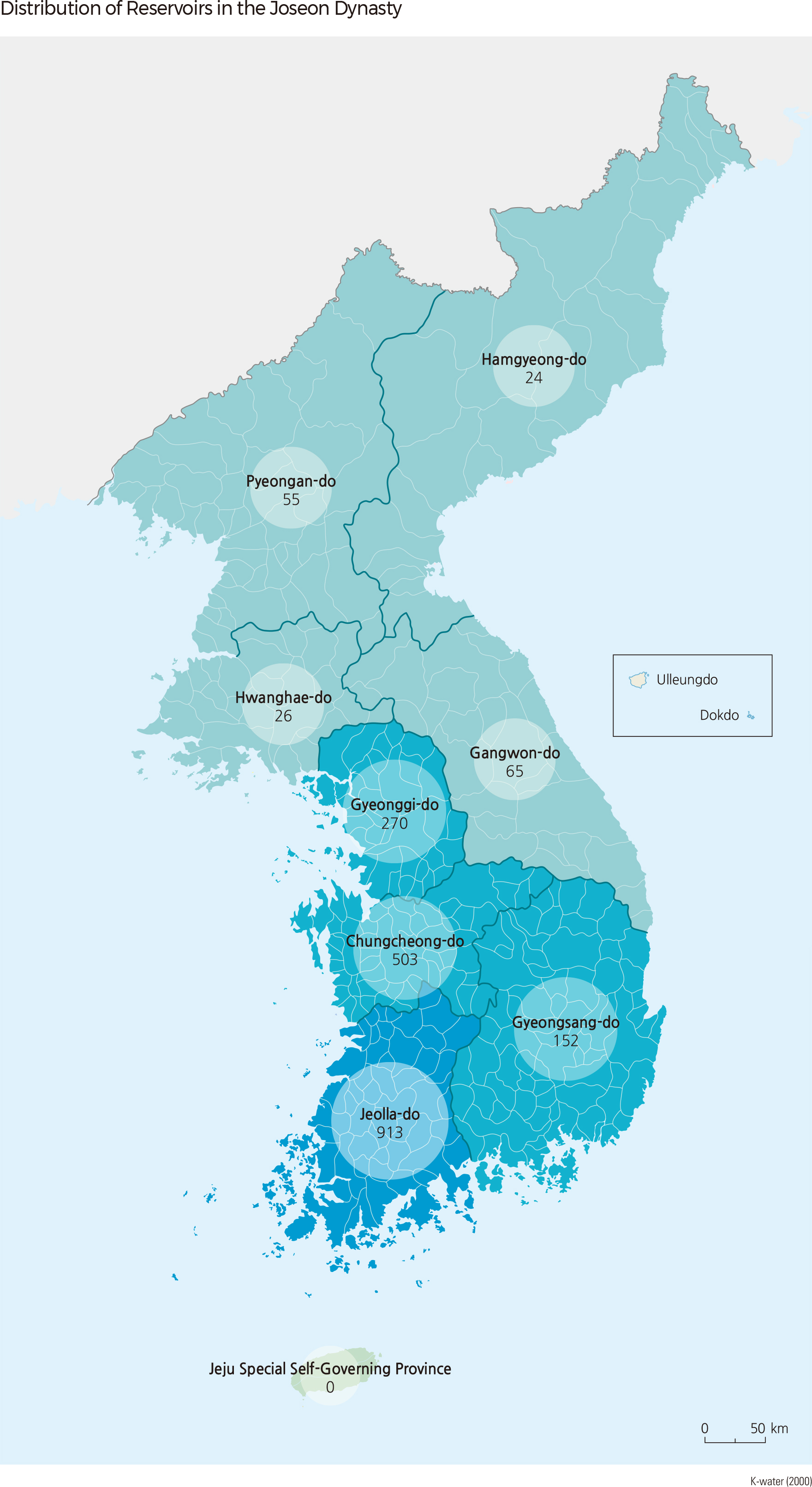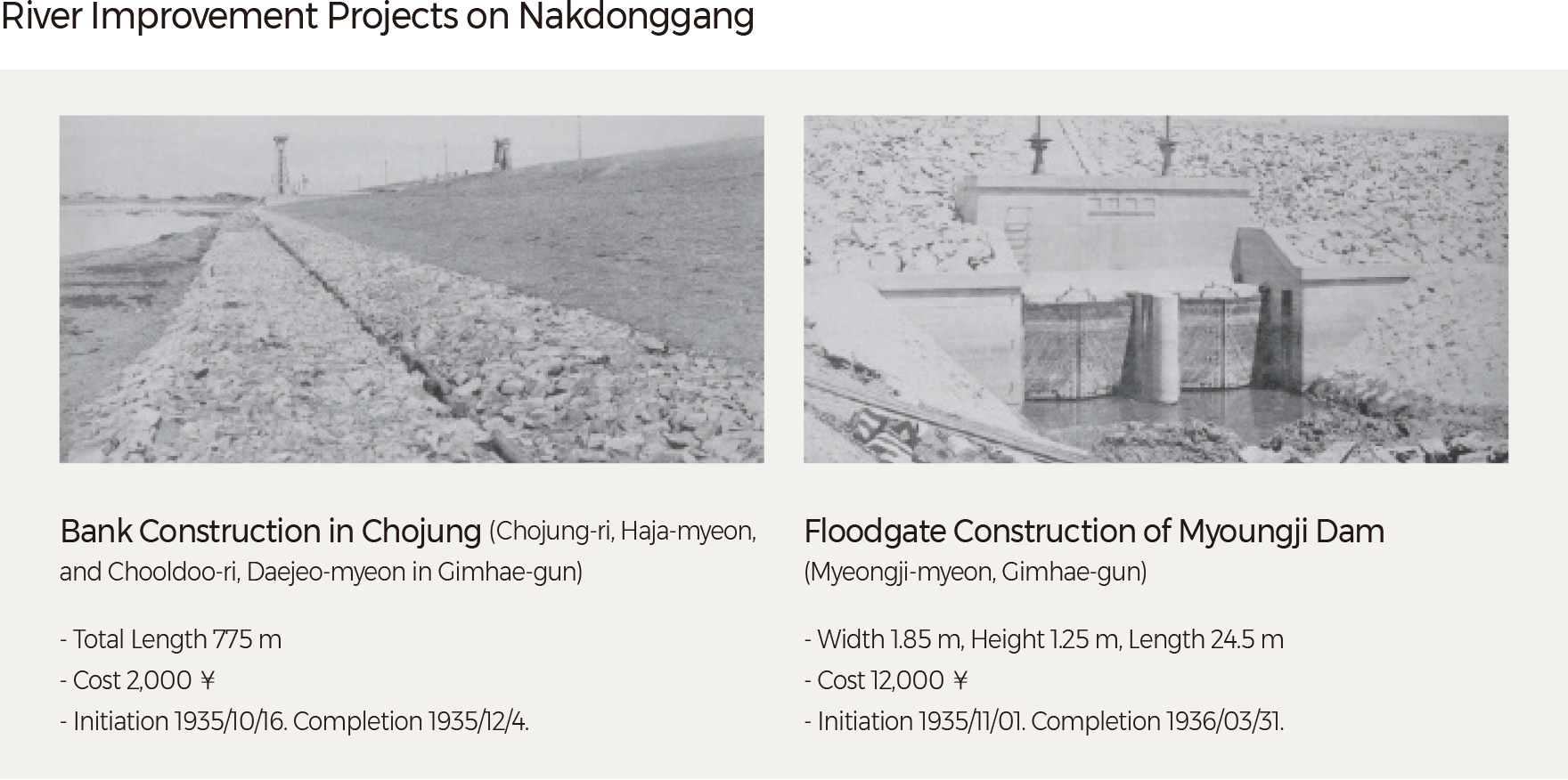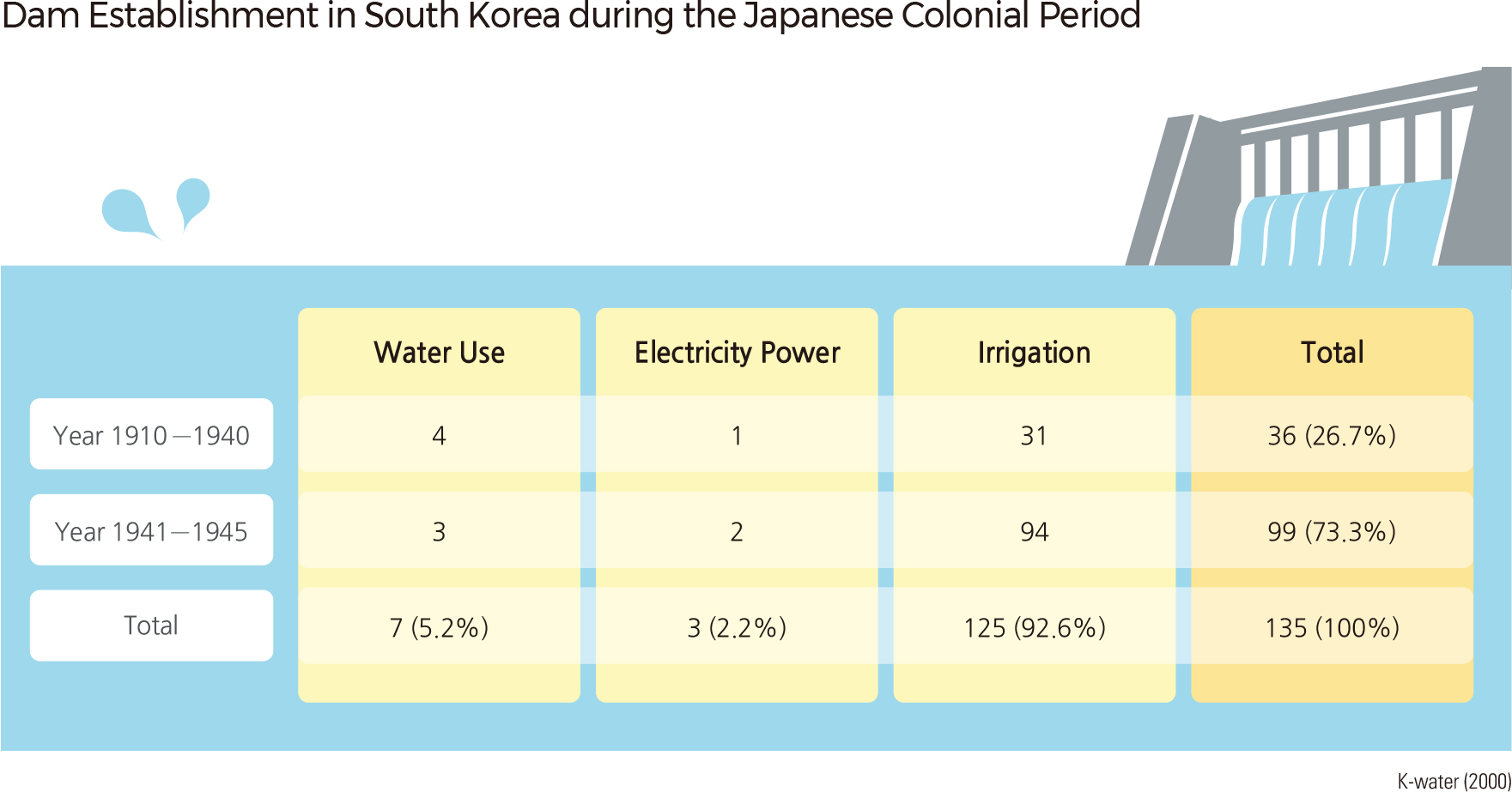English II 2020
Rice was first introduced to the Korean Peninsula in the Neolithic Age and became widespread throughout the south during the Bronze Age. Samguk sagi—the first historic record to mention rice farming in Korea—documents that King Daru (the second king of Baekje) established rice paddies across the country in his 6th year of ruling, or A.D. 33. As rice farming grew more central during the Three Kingdoms period, nationwide projects were carried out to build structures such as embankments, waterways, and reservoirs that would facilitate the access and storage of water. Samguk sagi also states that King Ilseoung of Silla ordered the construction of river banks and reclamation of wastelands in his 11th year (A.D. 144). As such, the Three Kingdoms period saw the construction of some of the oldest ancient reservoirs in Korea: Byeokgolje in Gimje-si, Euirimji in Jecheon-si, and Susanje in Miryang-si. Various flood control facilities and reservoirs such as the Yaksadong river banks in Ulsan, Cheongje in Yeongcheon-si, and Gonggeomji in Sangju-si were also constructed during this period.
As for the Goryeo dynasty, early records state that Usubu—a government bureau in charge of irrigation and waterways—was established in the 14th year of King Seongjong (A.D. 995). During this era, land reclamation was carried out on coastal regions and deserted inland fields, while islands underwent active development. Embankments, breakwaters, and reservoirs were newly constructed or built as an extension of existing structures. The largest embankment of the Goryeo dynasty is Hwangsan-un, estimated to have been built in the early 12th century.
As the Joseon dynasty was a predominantly agrarian society, it experienced significant improvement in flood control and irrigation management techniques. For instance, the Gwonnonggwan system was first established in the 4th year of King Taejo (A.D. 1395). It introduced government officials who promoted agricultural development and pushed for the construction of reservoirs. In A.D. 1419 (the 1st year of King Sejong), two copies of Jeeon daejang were completed to provide a full list of reservoirs across the country. A bureau named Jeeonsa was also established in order to administrate dams and other facilities. According to Dongguk munheon bigo, there were 3,378 dams recorded in 1782, most of which were located in the southern part of the Korean Peninsula.
During the Japanese Colonial Period, the Japanese imperial government intended to utilize Korea as a strategic military base for invading the Asian continent. For this reason, Japan built dams and reservoirs all across the country. Of the 30 dams constructed in the northern part of Korea, 25 were for electricity and five were for irrigation. A total of 135 dams and reservoirs were built in the southern part of Korea—most were for irrigation purposes while three were for electricity and seven were for domestic and industrial uses. The larger dams, mostly built after 1940, were constructed to serve local needs rather than for the comprehensive development of watersheds.
In the early 1910s, Japan launched an extensive investigation on Korean rivers in order to solve its food security problem. After conducting two cycles of research on 25 major rivers, it devised a river repair plan which later served as the basis for the Joseon Rivers Survey (published in 1928). According to the publication, river improvement projects began on Mangyeonggang and Jaeryeonggang in 1925, and Hangang, Nakdonggang, Daedonggang and other major rivers in 1926. These projects included the construction of dams and river banks for irrigation purposes, as well as the straightening of river channels. From 1911 to 1945, Japan also carried out three rounds of a nationwide survey on hydraulic power to supply information for the further construction of dams and reservoirs. |




